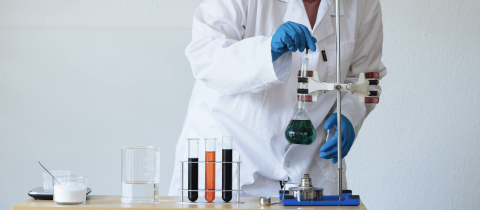Onion chemistry is extremely fascinating and extremely complex! We’ve been intrigued by this vegetable ever since our prehistoric ancestors gathered and cooked wild onions. By the time of the First Egyptian Dynasty 5000 years ago, onions were widely consumed for flavor and for their supposed medicinal properties. At various times they have been associated with the prevention of colds, loosening of phlegm, correction of indigestion, inducement of sleep, stimulation of appetite, disinfection of wounds and the elimination of parasites from the digestive tract. In ancient times people believed that onions were a symbol of eternity because of the concentric circles that make up their structure. For this reason, onion shaped towers became popular in Russia and Eastern Europe; the idea was that these buildings would stand forever.
Onions may not make us live forever but some of their components may indeed have medical benefits in reducing cholesterol, blood pressure and perhaps even the risk of cancer. This is why their chemistry has received a great deal of attention. The smell produced by a cut onion is actually a form of chemical warfare the plant has evolved to ward off pests. When an insect attacks the bulb, tissue damage unleashes a sequence of chemical reactions resulting in the release of propanethial oxide, an irritating substance designed to repel the attacker. The substance contains a compound called 1-propenyl-L- cysteine sulphoxide, which reacts with enzymes to form a gaseous sulphur containing chemical known as the lachrymatory factor (propanethiol-s-oxide). The vapour is dispersed through the air and comes into contact with our eyes, reacts with moisture there and forms sulphuric acid, which makes our eyes water. Unfortunately, to the onion, attack by an insect or a sharp knife appears to be the same. As a result a message is sent to the tear gland and tears are produced to rid the eyes of the painful substance.
Many different solutions have been suggested for the crying problem. You can try chilling the onion before cutting it, keeping your head as far away from the cutting board as possible. Cutting the onion under water, wearing goggles, or my personal favorite, having someone else chop the onion, are also possible solutions. But wouldn’t it be great if an onion could be produced without the lachrymatory factor? This just may be possible through a bit of genetic engineering. A paper published in the scientific journal Nature described that for an onion to produce the lachrymatory factor three components are necessary: propanethiol-S-oxide, alliinase (the enzyme responsible for the onion’s taste), and, a previously undiscovered enzyme, lachrymatory-factor synthase (LFS). The researchers were able to show that if the LFS is removed from the mixture, no lachrymatory factor forms, and as a result, there are no tears. Therefore, a genetically engineered onion with an inactive LFS gene would produce a full flavored onion with all the health benefits, but not the tears. So in the future we may get to throw away those tissue boxes and chop onions with smiles instead of tears.
Frying the onion causes yet another reaction, resulting in the formation of bispropenyl disulfide which has a sweet smell and a sweet taste. Some of the harsher tasting compounds are also destroyed by the heat, explaining the change in flavor. Furthermore, we do not cry over cooked onions because heat destroys the enzymes that are needed for the formation of propanethial oxide. Also the cooking process drives off any volatile irritants.







